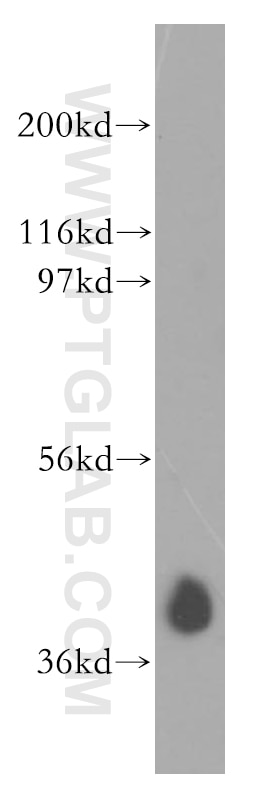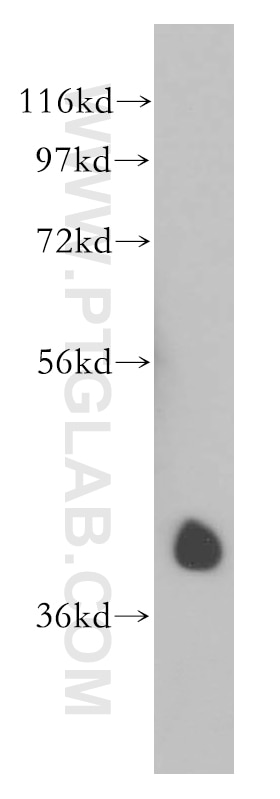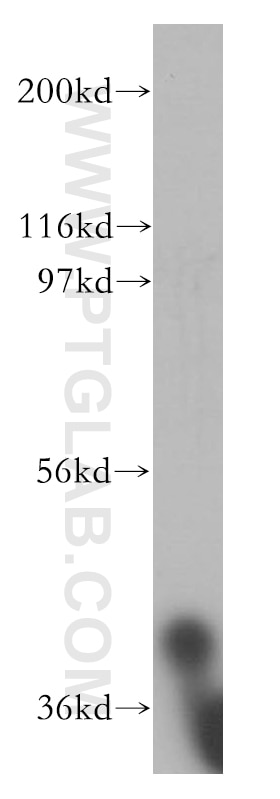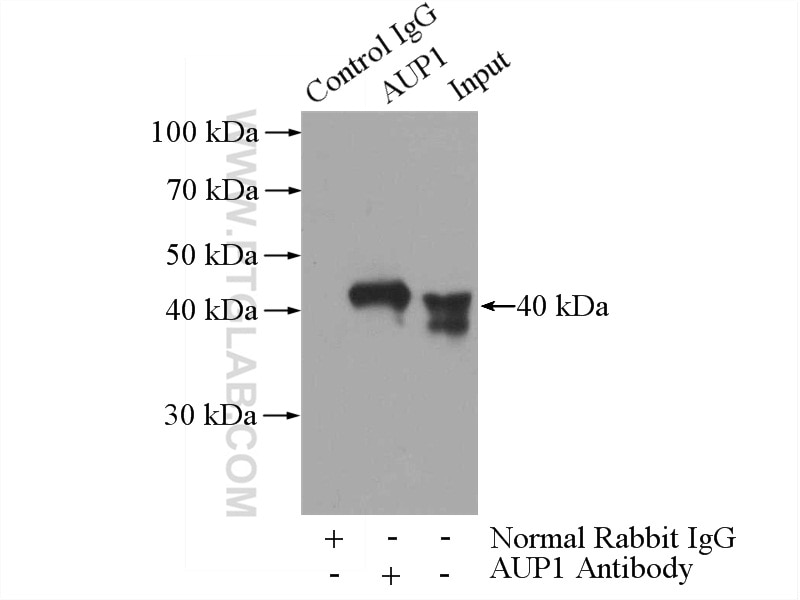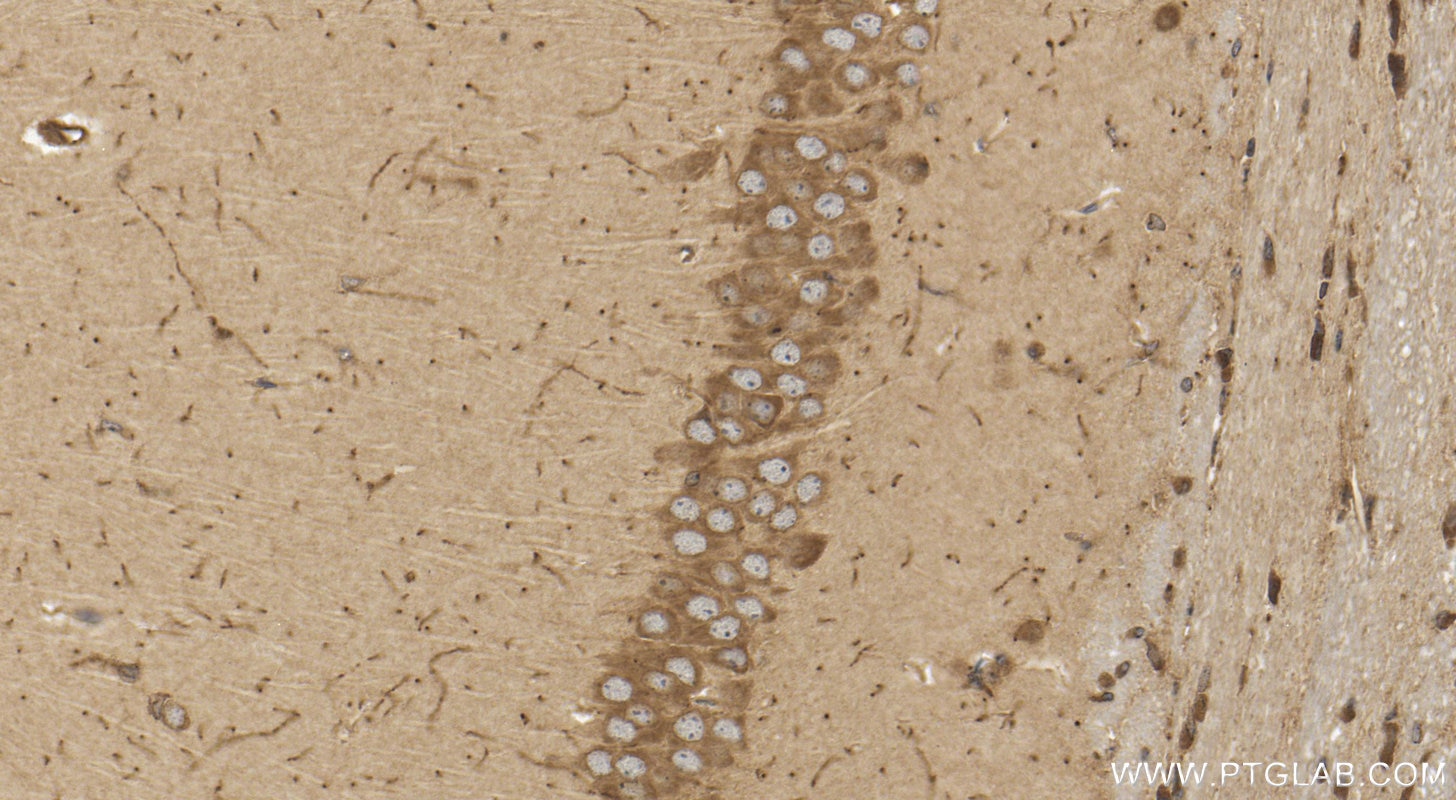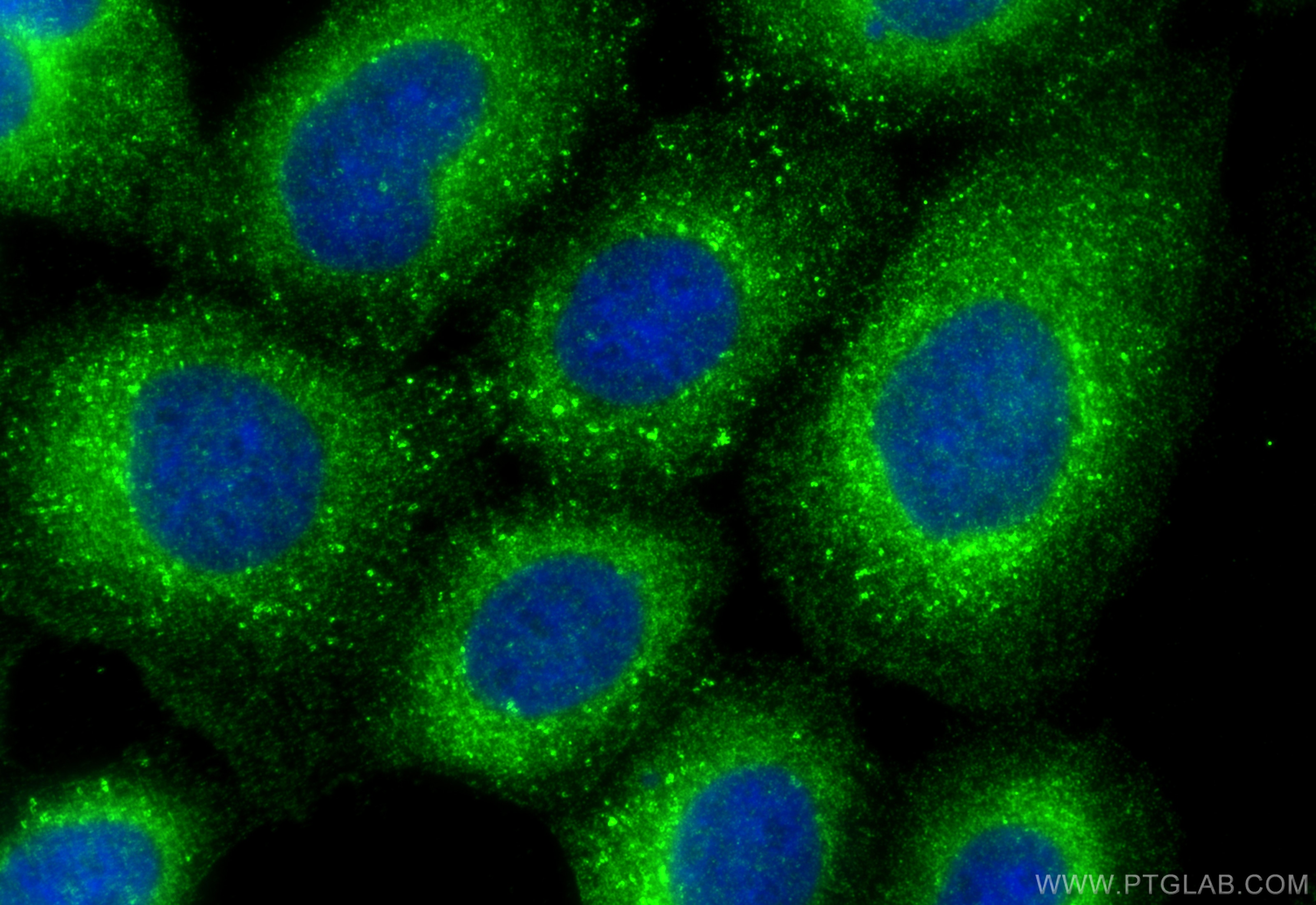AUP1 Polyklonaler Antikörper
AUP1 Polyklonal Antikörper für WB, IHC, IF/ICC, IP, ELISA
Wirt / Isotyp
Kaninchen / IgG
Getestete Reaktivität
human, Maus, Ratte
Anwendung
WB, IHC, IF/ICC, IP, ELISA
Konjugation
Unkonjugiert
Kat-Nr. : 13726-1-AP
Synonyme
Geprüfte Anwendungen
| Erfolgreiche Detektion in WB | K-562-Zellen, HEK-293-Zellen, Jurkat-Zellen |
| Erfolgreiche IP | HEK-293-Zellen |
| Erfolgreiche Detektion in IHC | Maushirngewebe Hinweis: Antigendemaskierung mit TE-Puffer pH 9,0 empfohlen. (*) Wahlweise kann die Antigendemaskierung auch mit Citratpuffer pH 6,0 erfolgen. |
| Erfolgreiche Detektion in IF/ICC | A431-Zellen |
Empfohlene Verdünnung
| Anwendung | Verdünnung |
|---|---|
| Western Blot (WB) | WB : 1:500-1:2000 |
| Immunpräzipitation (IP) | IP : 0.5-4.0 ug for 1.0-3.0 mg of total protein lysate |
| Immunhistochemie (IHC) | IHC : 1:50-1:500 |
| Immunfluoreszenz (IF)/ICC | IF/ICC : 1:200-1:800 |
| It is recommended that this reagent should be titrated in each testing system to obtain optimal results. | |
| Sample-dependent, check data in validation data gallery | |
Veröffentlichte Anwendungen
| WB | See 6 publications below |
| IF | See 1 publications below |
Produktinformation
13726-1-AP bindet in WB, IHC, IF/ICC, IP, ELISA AUP1 und zeigt Reaktivität mit human, Maus, Ratten
| Getestete Reaktivität | human, Maus, Ratte |
| In Publikationen genannte Reaktivität | human |
| Wirt / Isotyp | Kaninchen / IgG |
| Klonalität | Polyklonal |
| Typ | Antikörper |
| Immunogen | AUP1 fusion protein Ag4680 |
| Vollständiger Name | ancient ubiquitous protein 1 |
| Berechnetes Molekulargewicht | 416 aa, 45 kDa |
| Beobachtetes Molekulargewicht | 40 kDa |
| GenBank-Zugangsnummer | BC033646 |
| Gene symbol | AUP1 |
| Gene ID (NCBI) | 550 |
| Konjugation | Unkonjugiert |
| Form | Liquid |
| Reinigungsmethode | Antigen-Affinitätsreinigung |
| Lagerungspuffer | PBS with 0.02% sodium azide and 50% glycerol |
| Lagerungsbedingungen | Bei -20°C lagern. Nach dem Versand ein Jahr lang stabil Aliquotieren ist bei -20oC Lagerung nicht notwendig. 20ul Größen enthalten 0,1% BSA. |
Hintergrundinformationen
AUP1 (Ancient ubiquitous protein 1) is a protein associated with lipid metabolism, which is widely expressed on the surface of ER and Lipid droplets, involved in the degradation of misfolded proteins through autophagy (PMID: 37029364). In addition, AUP1 also controls lipid synthesis as it induces ubiquitination and the subsequent degradation of several key regulators of lipid biosynthesis, such as the cholesterol biosynthetic enzyme 3-hydroxy-3-methylglutaryl-coenzyme A reductase (PMID: 28330944).
Protokolle
| PRODUKTSPEZIFISCHE PROTOKOLLE | |
|---|---|
| WB protocol for AUP1 antibody 13726-1-AP | Protokoll herunterladen |
| IHC protocol for AUP1 antibody 13726-1-AP | Protokoll herunterladenl |
| IF protocol for AUP1 antibody 13726-1-AP | Protokoll herunterladen |
| IP protocol for AUP1 antibody 13726-1-AP | Protokoll herunterladen |
| STANDARD-PROTOKOLLE | |
|---|---|
| Klicken Sie hier, um unsere Standardprotokolle anzuzeigen |
Publikationen
| Species | Application | Title |
|---|---|---|
Mol Biol Cell Lipid disequilibrium disrupts ER proteostasis by impairing ERAD substrate glycan trimming and dislocation. | ||
PLoS One Chlamydia trachomatis Infection Leads to Defined Alterations to the Lipid Droplet Proteome in Epithelial Cells. | ||
Mol Biol Cell A VCP inhibitor substrate trapping approach (VISTA) enables proteomic profiling of endogenous ERAD substrates. | ||
bioRxiv Cancer-associated snaR-A noncoding RNA interacts with core splicing machinery and disrupts processing of mRNA subpopulations | ||
mBio AUP1 and UBE2G2 complex targets STING signaling and regulates virus-induced innate immunity | ||
Mol Cell Genome-wide CRISPR Analysis Identifies Substrate-Specific Conjugation Modules in ER-Associated Degradation. |
